
Sunday, July 8, 2007
Skip Bloc
Last night I finally came across a photo of our famed banner that was made for the Skip Bloc during the G8. The boxing kangaroo goes bloc style (credits go to Rach and G for their artistic masterpiece)


Saturday, July 7, 2007
CRREDA
Whilst in Agua Prieta I was able to visit the Centro de Rehabilitacion y Recuperacion para Enfermos de Drogadiccion y Alcoholismo, or CRREDA #8 (there are 13 in total, all within the border states of Mexico). This is a volunteer and donation-based drug and alcohol rehab center, with basically zero support from the government. Therefore to say that the center is lacking vital funding and resources would be an understatement.
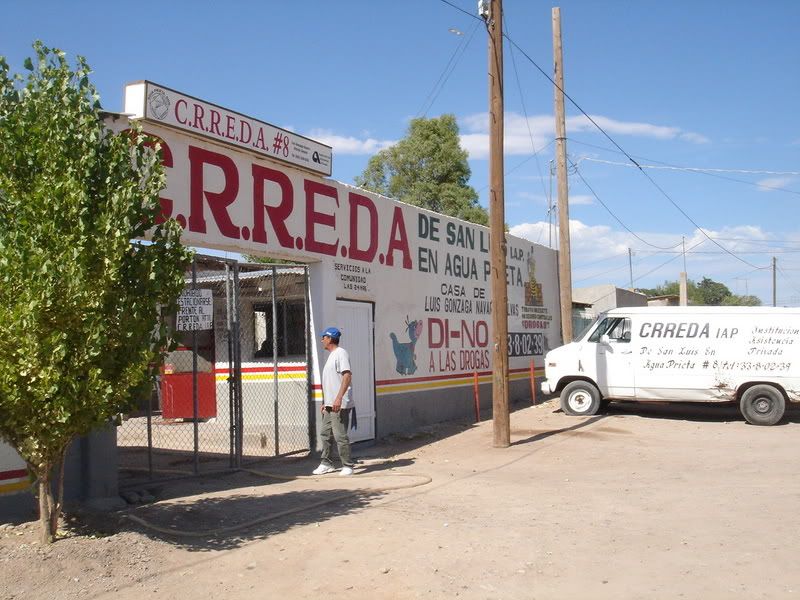
You are greeted at the gate by the security, one of the patients who have self-checked themselves into the center. It is expected that once you check in you remain there for at least 3 months, though you are free to leave if you choose. However, if you do leave, and a volunteer/patient sees you on the street in Agua Prieta, you run the risk of being essentially kidnapped and dragged back in, hence you will sometimes see people running as fast as they can when walking around town with volunteers. The majority of patients are ex-gang members, often deported from the U.S., sometimes after doing jail time there for smuggling. Some are still in their teens.
There are 3 dorms, one for men, which sleeps up to 70 people in a space really suited for about 10, a womens dorm, and an area/dorm for those with mental disability who have essentially been dropped off never to be picked up again. There is a small church-like space for sermons and for AA style meetings, which occur twice a day. A kitchen is located to the back, though the smell from the disguarded food and 1000s of flies makes it difficult to hang around for long.
Roughly once a week, some of the people in CRREDA take part in Agua Para La Vida, and head out into the desert just outside of Agua Prieta, to fill water barrels placed on ranch land close to the border, a popular crossing area for migrants. Water barrels had to be moved onto the Mexican side as ranchers and the Minutemen had previously sabotaged the water barrels when they were placed on the U.S. side. The water is essential, as it is impossible for migrants crossing to carry enough water to last them the 3-5 day trek, especially in summer with temps into the 110-120 range (45-50 celcius basically)
So along with a volunteer from No More Deaths, I headed out in the truck with 3 members of CRREDA. It takes about an hour to get out onto the ranch, though it took a little longer due to a completely blown-out tire on the way there
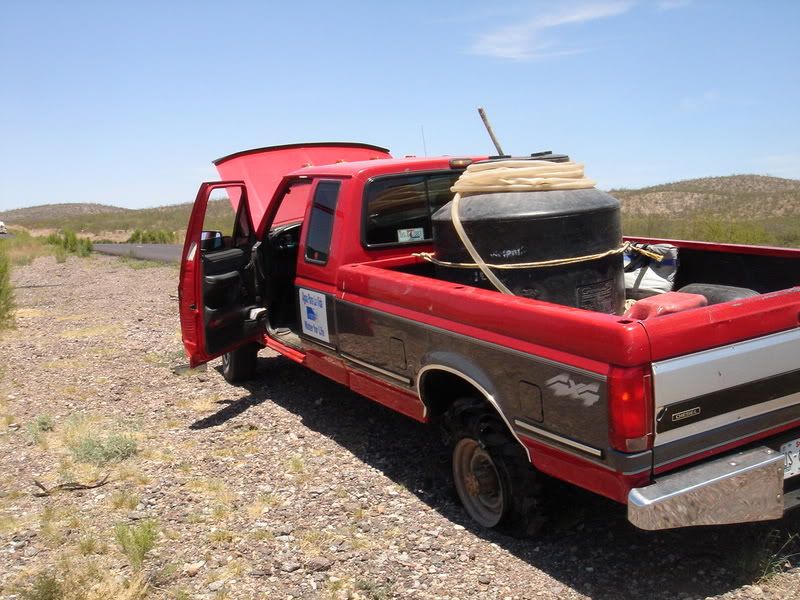
Once you get off the freeway and onto the ranch land its clear you are in the desert, the terrain is rough, roadrunner birds start to appear, and the heat becomes almost unbearable. Riding on the back of the truck seemed to be a good idea, though there were a few close calls. Eventually we get to the first barrel, marked by a blue flag so that those crossing can find it. The barrels are usually located near dry washes (river beds that are dry except in the monsoons) or under big trees that offer shade and a hiding spot. Its clear these are heavily frequented areas by the disgarded water bottles, clothing, diapers, toothbrushes, and tins that once contained food
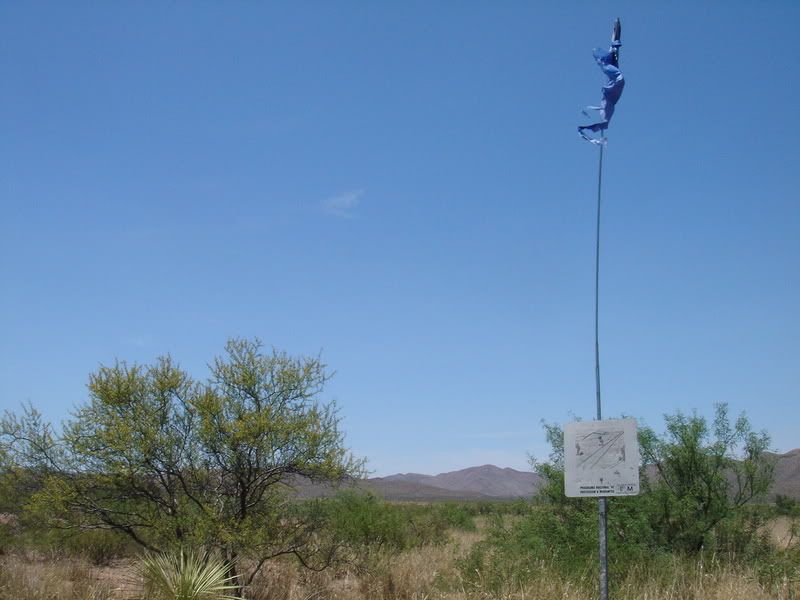
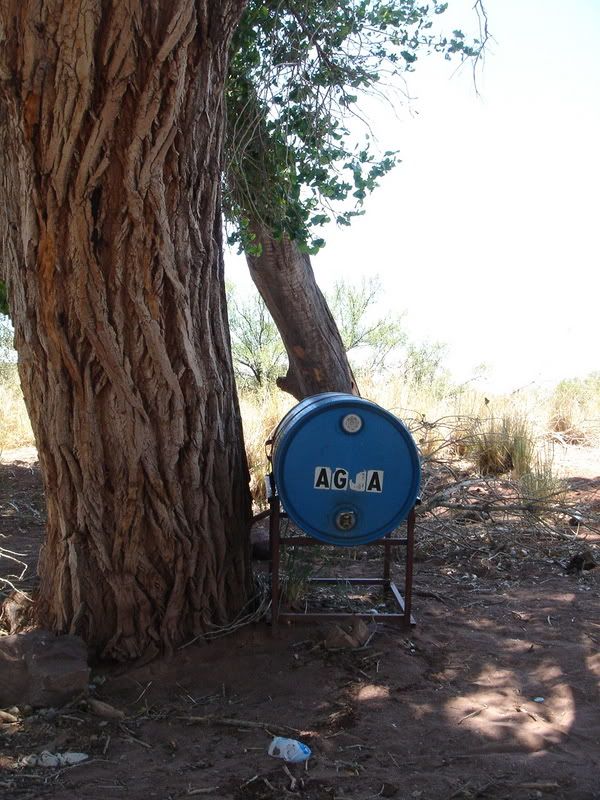
Getting closer to the border, you can see off in the distance the National Guard who have been deployed to the border to help in constructing the new fencing. Further off on top of the hills in the distance, if you look hard you can see the guard towers, that are often equipped with cameras. Eventually after walking around a bit, the Border Patrol begin to show up a little way off, clearly aware we are about, most likely because we have set off motion sensors when walking across the border line
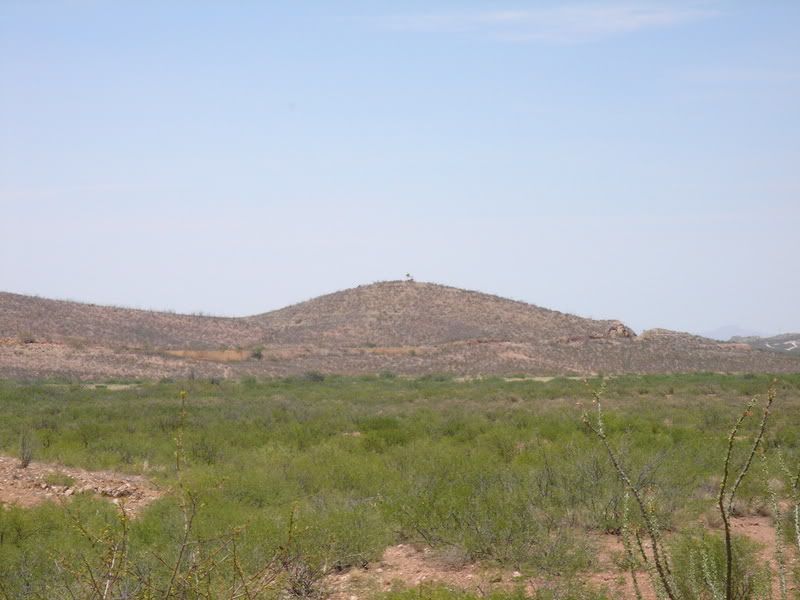
On top of the hill you can just make out the watch tower
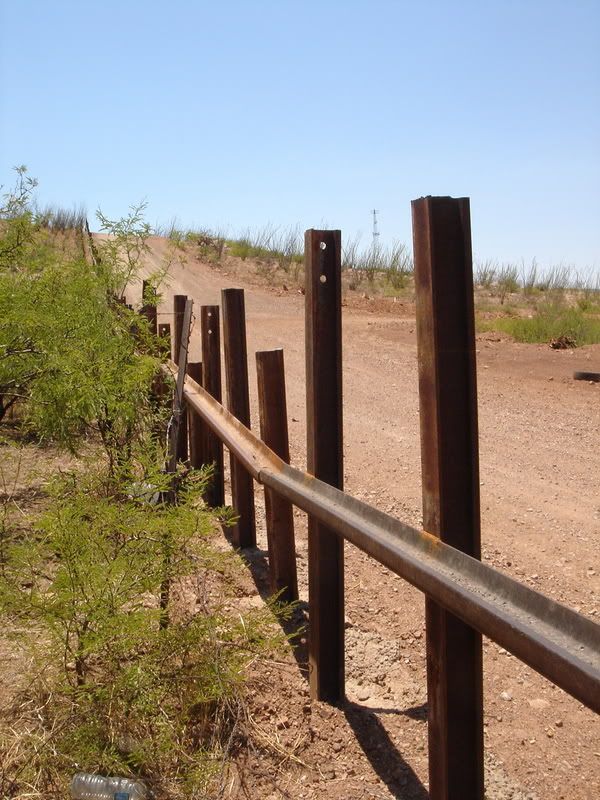
The base of the new fence being constructed along the border, which is still easily passable at this stage
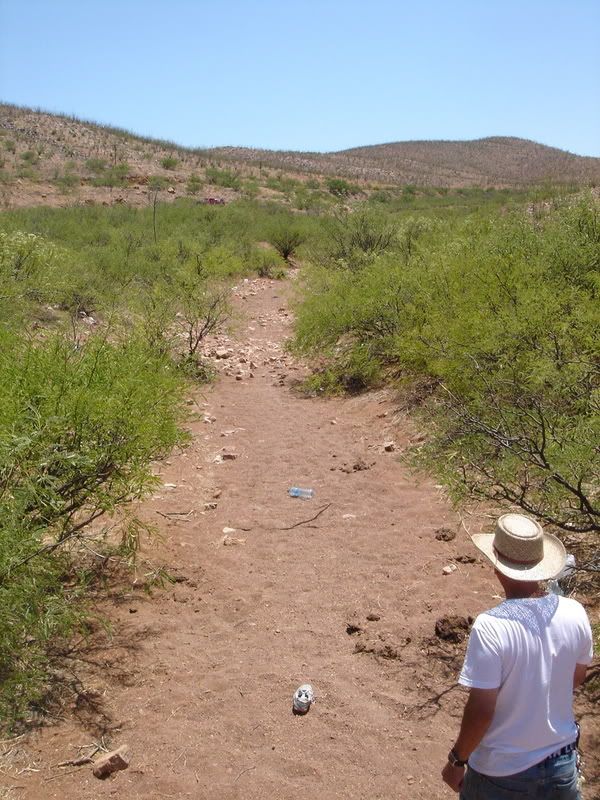
Hanging out with two of the members of CRREDA and Meghan from NMD (looking back into Mexico)
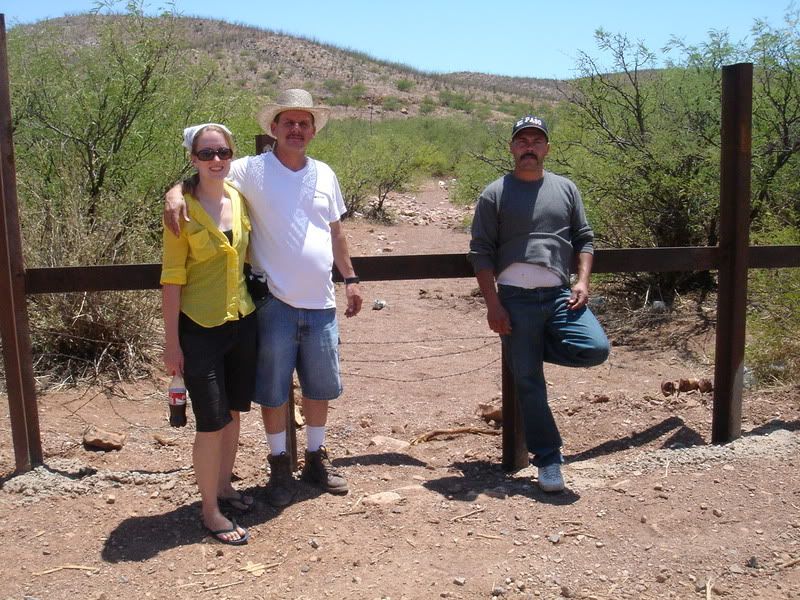
Looking back in to Mexico along a heavily travelled dry wash
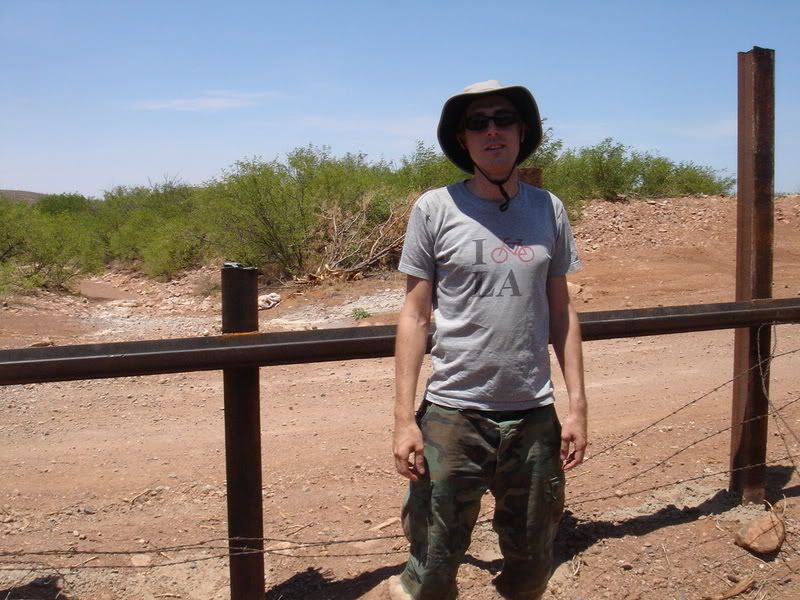
Sun-hats are the new black in the desert

You are greeted at the gate by the security, one of the patients who have self-checked themselves into the center. It is expected that once you check in you remain there for at least 3 months, though you are free to leave if you choose. However, if you do leave, and a volunteer/patient sees you on the street in Agua Prieta, you run the risk of being essentially kidnapped and dragged back in, hence you will sometimes see people running as fast as they can when walking around town with volunteers. The majority of patients are ex-gang members, often deported from the U.S., sometimes after doing jail time there for smuggling. Some are still in their teens.
There are 3 dorms, one for men, which sleeps up to 70 people in a space really suited for about 10, a womens dorm, and an area/dorm for those with mental disability who have essentially been dropped off never to be picked up again. There is a small church-like space for sermons and for AA style meetings, which occur twice a day. A kitchen is located to the back, though the smell from the disguarded food and 1000s of flies makes it difficult to hang around for long.
Roughly once a week, some of the people in CRREDA take part in Agua Para La Vida, and head out into the desert just outside of Agua Prieta, to fill water barrels placed on ranch land close to the border, a popular crossing area for migrants. Water barrels had to be moved onto the Mexican side as ranchers and the Minutemen had previously sabotaged the water barrels when they were placed on the U.S. side. The water is essential, as it is impossible for migrants crossing to carry enough water to last them the 3-5 day trek, especially in summer with temps into the 110-120 range (45-50 celcius basically)
So along with a volunteer from No More Deaths, I headed out in the truck with 3 members of CRREDA. It takes about an hour to get out onto the ranch, though it took a little longer due to a completely blown-out tire on the way there

Once you get off the freeway and onto the ranch land its clear you are in the desert, the terrain is rough, roadrunner birds start to appear, and the heat becomes almost unbearable. Riding on the back of the truck seemed to be a good idea, though there were a few close calls. Eventually we get to the first barrel, marked by a blue flag so that those crossing can find it. The barrels are usually located near dry washes (river beds that are dry except in the monsoons) or under big trees that offer shade and a hiding spot. Its clear these are heavily frequented areas by the disgarded water bottles, clothing, diapers, toothbrushes, and tins that once contained food


Getting closer to the border, you can see off in the distance the National Guard who have been deployed to the border to help in constructing the new fencing. Further off on top of the hills in the distance, if you look hard you can see the guard towers, that are often equipped with cameras. Eventually after walking around a bit, the Border Patrol begin to show up a little way off, clearly aware we are about, most likely because we have set off motion sensors when walking across the border line

On top of the hill you can just make out the watch tower

The base of the new fence being constructed along the border, which is still easily passable at this stage

Hanging out with two of the members of CRREDA and Meghan from NMD (looking back into Mexico)

Looking back in to Mexico along a heavily travelled dry wash

Sun-hats are the new black in the desert
Complexities of migration at the Mexico-U.S. border
Though I could never fully understand, nor summarise, the complexities of migration along the border between Mexico and the U.S., the more time spent here, the more clear and yet complicated the situation becomes.
Many Mexican nationals are able to cross the border into the U.S. for short periods of time on visitor passes. If you own property, or have other ways to prove that you will return to Mexico you can obtain these passes. These are commonly used to allow residents of border cities to cross into the U.S., to shop at stores such as Walmart. Upon entering into Agua Prieta at the checkpoint, you must negotiate a sea of Walmart shopping carts disguarded at the border, as they will not fit through the turnstyles.
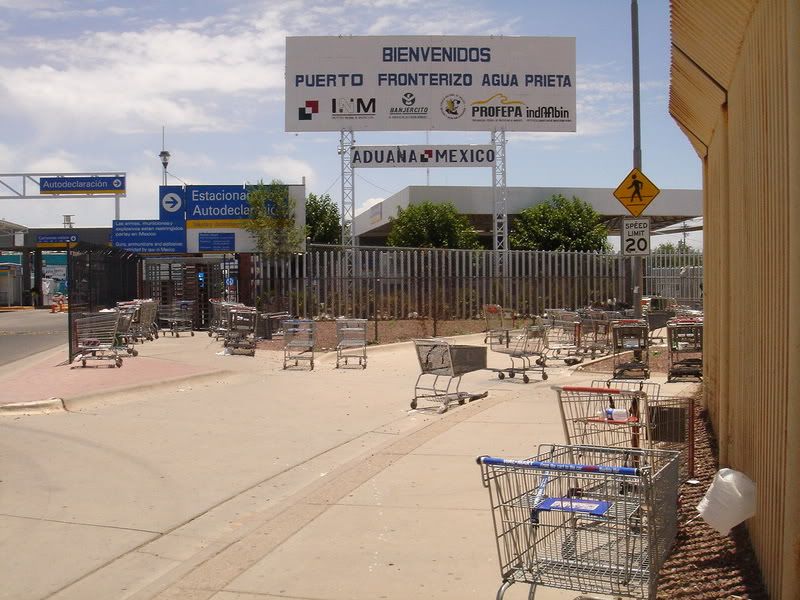
A common scene of the sea of Walmart carts left at the turnstyles into Mexico
1000s of people therefore pass the migrant center, including tourists. But it is clear when a group of recently deported migrants are passing. The first clear sign is that they will be missing their shoelaces. The border patrol makes each person remove their shoelaces, I assume to reduce the risk of causing self harm, and to make it harder to run. Commonly the groups will also be wearing mostly dark clothing to help them remain invisible whilst crossing the desert at night.
Many well dressed men will also hang around outside the center. These I came to realize are commonly the coyotes, waiting for the group who has been recently deported to be sent back into Mexico, most likely to try and cross again the same day or night, or soon thereafter. If they are lucky, migrants will be given a few chances to cross for the one initial payment. Close-by are a line of taxis. Though apparently for public use, I was informed that their primary purpose (and almost sole purpose) is to transport groups back to the crossing point where their coyote has chosen to attempt to re-enter the U.S.
Beside the migrant center is the Aduana, the Mexican customs. Here any migrant that is found not to be from Mexico, but from Central America is held. It is illegal for migrants outside of Mexico to be in the country, so they face a second round of interrogation and deportation. They are huddled onto another bus headed south. Many will lie and say they are from southern Mexican states such as Oaxaca or Chiapas in the hope that the Mexican government will believe they are from Mexico and let them go.
As groups pass the center, volunteers inform them that there is food, water and medical assistance free of charge, and a place to rest. Many have been in the desert for days, without water or food, which is further denied once they are captured by the border patrol. Many are apprehensive about coming in, believing it will cost money, or that the government is behind the center's operation. Others are hurried on by their coyote and are not allowed to rest.
Across the road is the Grupo Beta, an organization funded by the Mexican government to give information to migrants about to cross, or who have been recently deported. They also offer discounted bus tickets to those wishing to return home, often to the southern states of Mexico. Further away are a number of churches and non-profit spaces that offer shelter for migrants (commonly male, female, or youth only). People can stay there for few nights, or longer if they are injured badly.
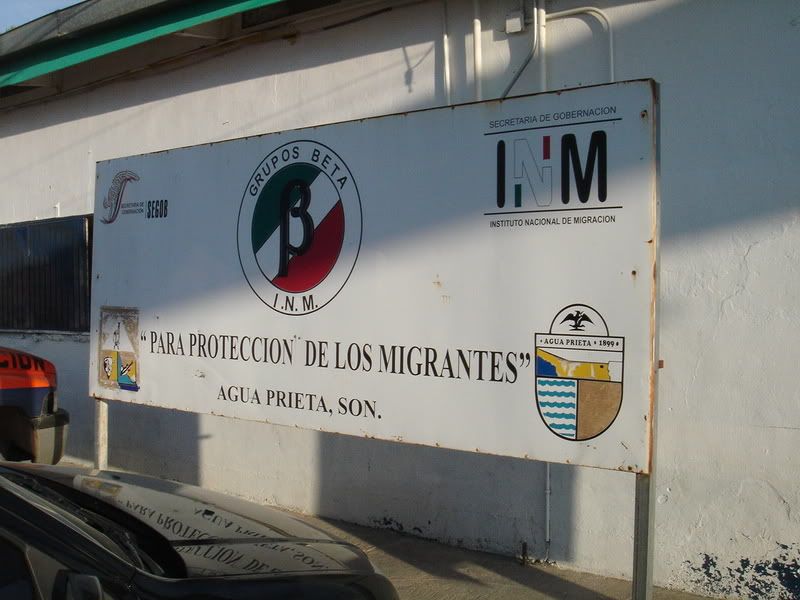
Outside Grupo Beta in Agua Prieta
Many Mexican nationals are able to cross the border into the U.S. for short periods of time on visitor passes. If you own property, or have other ways to prove that you will return to Mexico you can obtain these passes. These are commonly used to allow residents of border cities to cross into the U.S., to shop at stores such as Walmart. Upon entering into Agua Prieta at the checkpoint, you must negotiate a sea of Walmart shopping carts disguarded at the border, as they will not fit through the turnstyles.

A common scene of the sea of Walmart carts left at the turnstyles into Mexico
1000s of people therefore pass the migrant center, including tourists. But it is clear when a group of recently deported migrants are passing. The first clear sign is that they will be missing their shoelaces. The border patrol makes each person remove their shoelaces, I assume to reduce the risk of causing self harm, and to make it harder to run. Commonly the groups will also be wearing mostly dark clothing to help them remain invisible whilst crossing the desert at night.
Many well dressed men will also hang around outside the center. These I came to realize are commonly the coyotes, waiting for the group who has been recently deported to be sent back into Mexico, most likely to try and cross again the same day or night, or soon thereafter. If they are lucky, migrants will be given a few chances to cross for the one initial payment. Close-by are a line of taxis. Though apparently for public use, I was informed that their primary purpose (and almost sole purpose) is to transport groups back to the crossing point where their coyote has chosen to attempt to re-enter the U.S.
Beside the migrant center is the Aduana, the Mexican customs. Here any migrant that is found not to be from Mexico, but from Central America is held. It is illegal for migrants outside of Mexico to be in the country, so they face a second round of interrogation and deportation. They are huddled onto another bus headed south. Many will lie and say they are from southern Mexican states such as Oaxaca or Chiapas in the hope that the Mexican government will believe they are from Mexico and let them go.
As groups pass the center, volunteers inform them that there is food, water and medical assistance free of charge, and a place to rest. Many have been in the desert for days, without water or food, which is further denied once they are captured by the border patrol. Many are apprehensive about coming in, believing it will cost money, or that the government is behind the center's operation. Others are hurried on by their coyote and are not allowed to rest.
Across the road is the Grupo Beta, an organization funded by the Mexican government to give information to migrants about to cross, or who have been recently deported. They also offer discounted bus tickets to those wishing to return home, often to the southern states of Mexico. Further away are a number of churches and non-profit spaces that offer shelter for migrants (commonly male, female, or youth only). People can stay there for few nights, or longer if they are injured badly.

Outside Grupo Beta in Agua Prieta
Centro de Recursos para Migrantes
Sunday 14th May
After being teamed up with two other volunteers, we drove the 2 or so hours from Tucson to Douglas. Douglas is a town of only a few thousand, compared to the 200,000+ population of Agua Prieta, which can be seen from downtown Douglas. It has the feel of a wild west town (we passed through Tombstone on the way), though perhaps ghost town is more accurate. The temperature is around 100 degrees or higher, so there is little movement in the streets, and most houses, though occupied, look as though they were vacated years ago. As I had read many times, the sky here is big and endless. Huge clouds roll in, and your line of site carries for miles. Apparently monsoon season isnt too far off, and I'm looking forward to seeing the storms come in from across the desert.
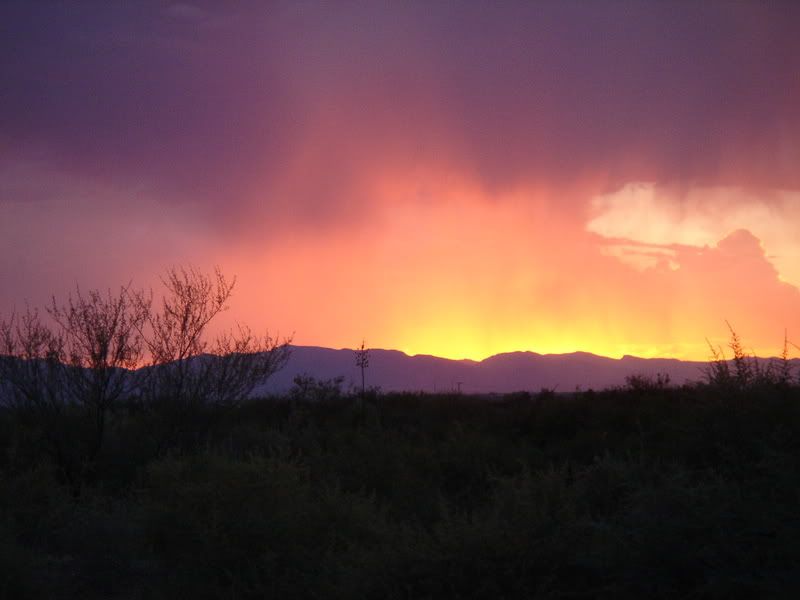
Late evening in Douglas
We are staying at a house that provides room for volunteers, but is also the headquaters for Frontera de Cristo, a Presbyterian bi-national based non-profit working with border issues, and Cafe Justo, a Fair Trade Plus organization, where not only is the coffee fair trade, but it is roasted in Mexico, keeping the profits entirely on the Southern side of the border. From the house its only a 20 minute walk, but in the heat of the day its quite a challenge.

The volunteer house, along with my loaned Huffy mountain bike
The border crossing at Agua Prieta is quite unimpressive. Compared to the Tijuana/San Diego crossing, its like a sleepy township. However, the highly perfected control of space is highly comparable. A fence runs along the length of the border, flood lit, and patrolled by countless U.S. Border Patrol. The sterility of the border check points where you can cross by foot or by car is identical to the feel of any other crossing point along the 2000 mile border. And none of the border patrol agents know how to deal with an Australian passport...
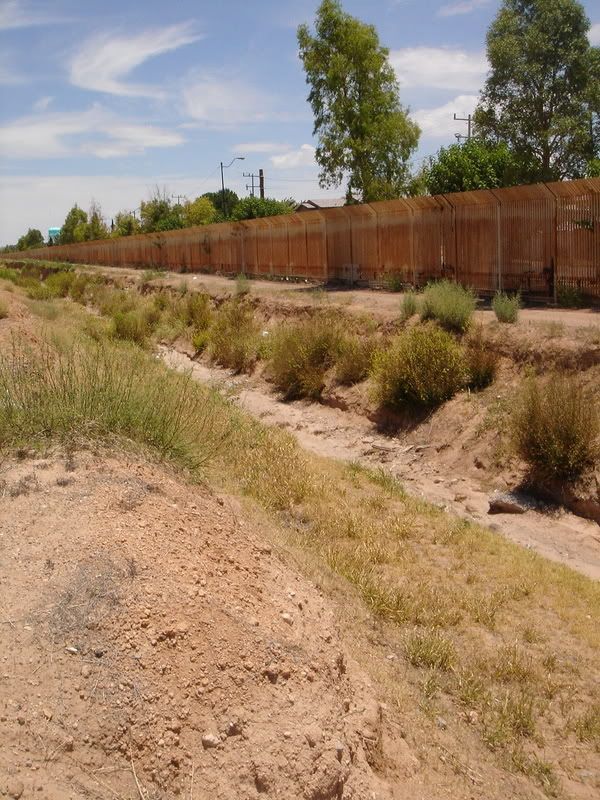
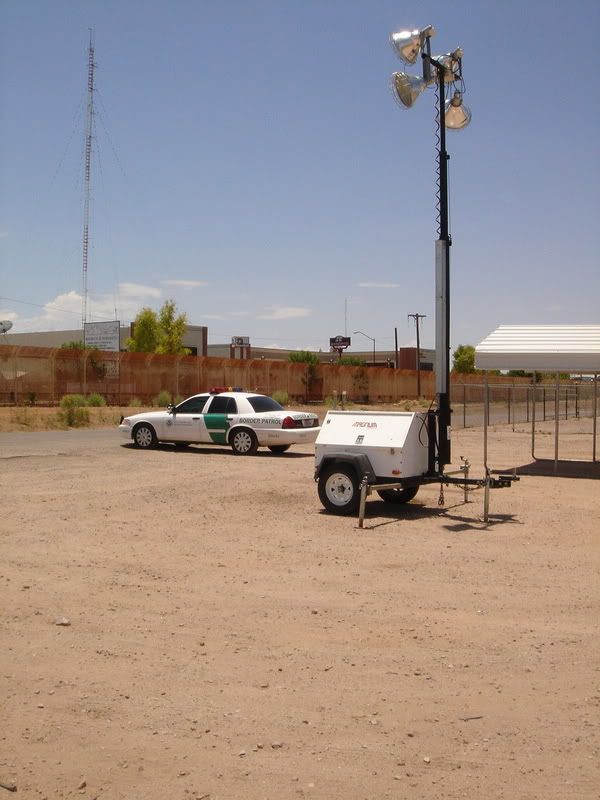
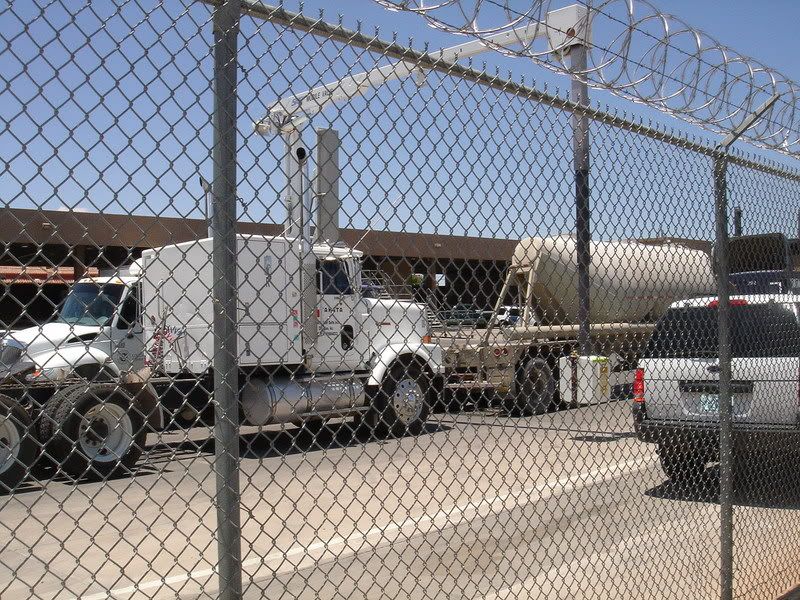
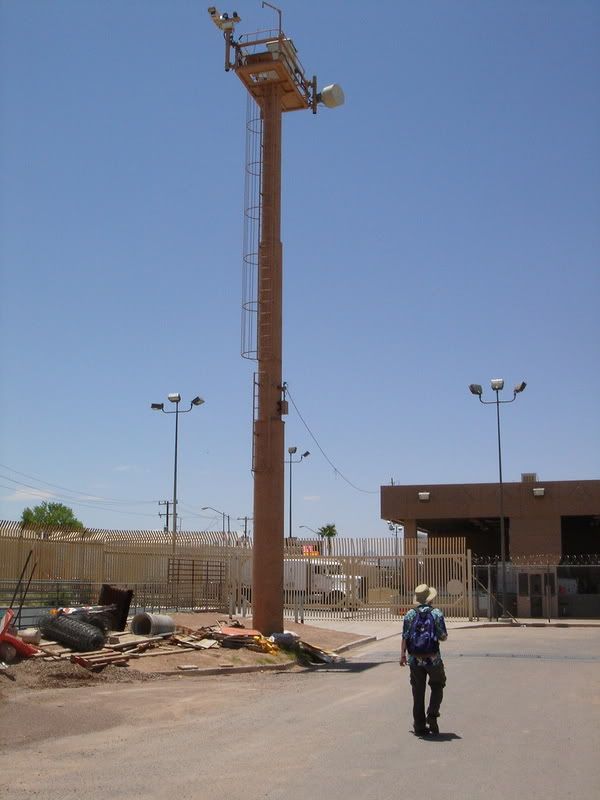
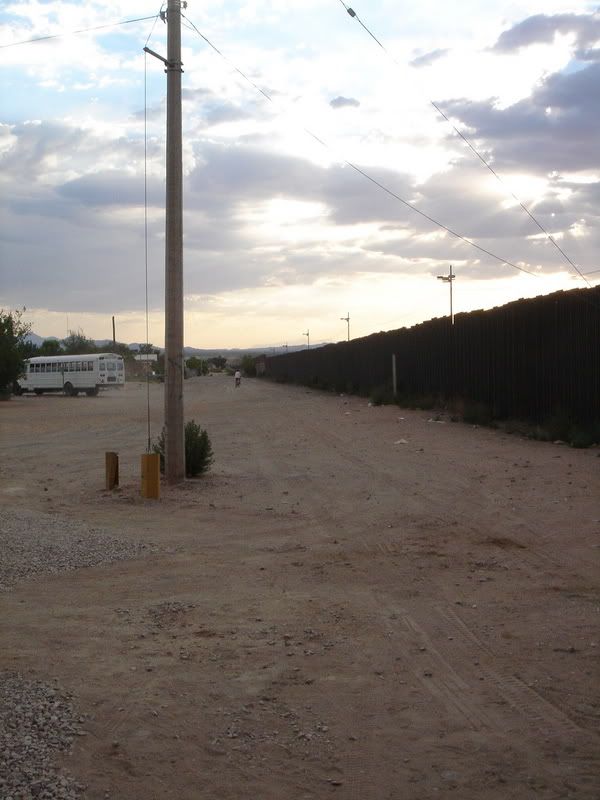
Directly inside the border is the Centro de Recursos para Migrantes. It is a small unassuming building, staffed entirely by volunteers from NMD, Frontera de Cristo, and compassionate locals. It is one of the first sites recently deported groups see once they enter Mexico.
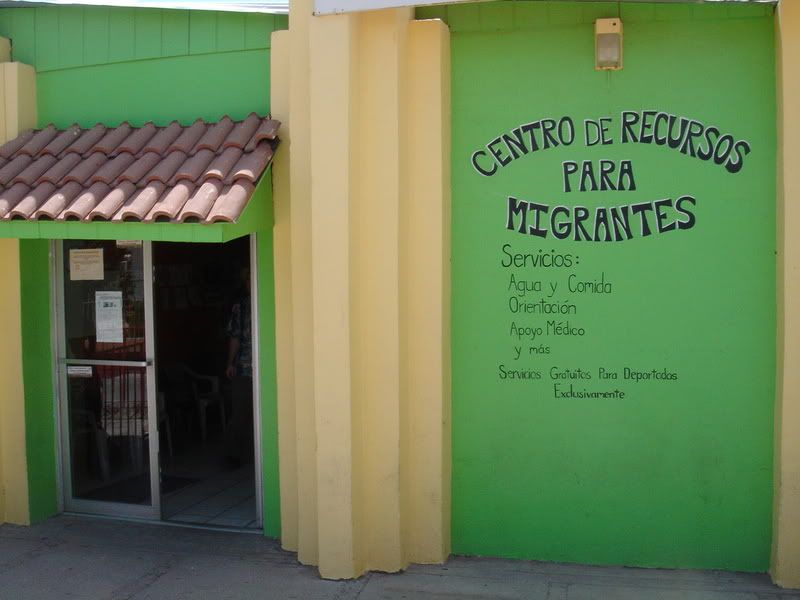
After being teamed up with two other volunteers, we drove the 2 or so hours from Tucson to Douglas. Douglas is a town of only a few thousand, compared to the 200,000+ population of Agua Prieta, which can be seen from downtown Douglas. It has the feel of a wild west town (we passed through Tombstone on the way), though perhaps ghost town is more accurate. The temperature is around 100 degrees or higher, so there is little movement in the streets, and most houses, though occupied, look as though they were vacated years ago. As I had read many times, the sky here is big and endless. Huge clouds roll in, and your line of site carries for miles. Apparently monsoon season isnt too far off, and I'm looking forward to seeing the storms come in from across the desert.

Late evening in Douglas
We are staying at a house that provides room for volunteers, but is also the headquaters for Frontera de Cristo, a Presbyterian bi-national based non-profit working with border issues, and Cafe Justo, a Fair Trade Plus organization, where not only is the coffee fair trade, but it is roasted in Mexico, keeping the profits entirely on the Southern side of the border. From the house its only a 20 minute walk, but in the heat of the day its quite a challenge.

The volunteer house, along with my loaned Huffy mountain bike
The border crossing at Agua Prieta is quite unimpressive. Compared to the Tijuana/San Diego crossing, its like a sleepy township. However, the highly perfected control of space is highly comparable. A fence runs along the length of the border, flood lit, and patrolled by countless U.S. Border Patrol. The sterility of the border check points where you can cross by foot or by car is identical to the feel of any other crossing point along the 2000 mile border. And none of the border patrol agents know how to deal with an Australian passport...





Directly inside the border is the Centro de Recursos para Migrantes. It is a small unassuming building, staffed entirely by volunteers from NMD, Frontera de Cristo, and compassionate locals. It is one of the first sites recently deported groups see once they enter Mexico.

No More Deaths
For the summer I have relocated to Tucson, Arizona and the U.S.-Mexico borderlands to volunteer with No More Deaths (www.nomoredeaths.org). Approximately 500+ people a year are dying crossing the border into the U.S., predominantly in the deserts of Arizona.
Saturday 16th June
4.30am: Turns out my alarm didnt work, and now I'm 4 hours late in getting on the road to Tucson (about 500 miles from L.A.) I've rented a Subaru Forester (possibly the nicest car I've driven) to get to Tucson, and at 110mph I make it in time for the No More Deaths training, held once a week in Tucson. I moved out of my apartment before going to Europe in May (followed by my housemates also moving out a month later), so the small amount of belongings I own are now either in my backpack, or in my office at school.
Its been weird being back in L.A. for the few days that I was without a house and with minimal belongings stacked in my office. I always feel strange returning to L.A. after being elsewhere, particularly back home in Australia. But then I feel strange being in Australia too. Neither L.A. or Melbourne are home, but both are home. I'm enjoying the slightly nomadic approach, and coming to realize that owning less is definately better (but that I still possess too much). Anyways back to Tucson...
Driving along the Interstate 10 that literally gets me from door to door (L.A.-Tucson) the weather begins to heat up. Almost immediately after crossing the border into Arizona it starts to get hot quick. By the time I arrive in Tucson its 105 degrees (40 celcius) and I've seen at least one car on fire on the side of the road. Also, as soon as you cross into Arizona, the giant three-prong cacti you see in westerns start to appear.
Some friends in Tucson involved with No More Deaths, the No Borders Camp, and Dry River (the anarchist collective in Tucson) have been kind enough to put me up for the small amount of time I am in Tucson when not volunteering with No More Deaths.
I attended the training for No More Deaths in a local church hall. We were trained briefly for the different aspects of volunteering over the summer. There are two main aspects to the work that NMD does. The first are the desert patrols, where groups hike the trails that migrants use to cross into the U.S., searching for anybody who is in trouble (ie: from dehydration, heat stress, lost, broken ankles, blisters etc), and to place large barrels of water in the desert. This work is in an attempt to reduce the exceptional amounts of deaths of those crossing. The second aspect to the work of NMD are the migrant resource centers, located in Nogales and in Agua Prieta, both just inside the border of Mexico. These are situated at the ports of entry, where migrants are deported too after being caught in the desert by the U.S. Border Patrol, placed on a bus (run by the private company Wackenhut), driven back to the border, processed, and marched across the border into Mexico. Most are not from the towns they are deported too, and are often without money after paying the approximately $2000-$3000 to cross using a 'coyote' (basically a smuggler for lack of a better, less loaded, term). At the centers, volunteers provide water, coffee, food, and medical care, along with information on shelters to sleep at or ways to get back home (often in Southern Mexico).
For the first two weeks, I have been placed at the Agua Prieta Migrant Resource Center, and am staying in Douglas, Arizona, a small town directly opposite Agua Prieta on the U.S. side.
Saturday 16th June
4.30am: Turns out my alarm didnt work, and now I'm 4 hours late in getting on the road to Tucson (about 500 miles from L.A.) I've rented a Subaru Forester (possibly the nicest car I've driven) to get to Tucson, and at 110mph I make it in time for the No More Deaths training, held once a week in Tucson. I moved out of my apartment before going to Europe in May (followed by my housemates also moving out a month later), so the small amount of belongings I own are now either in my backpack, or in my office at school.
Its been weird being back in L.A. for the few days that I was without a house and with minimal belongings stacked in my office. I always feel strange returning to L.A. after being elsewhere, particularly back home in Australia. But then I feel strange being in Australia too. Neither L.A. or Melbourne are home, but both are home. I'm enjoying the slightly nomadic approach, and coming to realize that owning less is definately better (but that I still possess too much). Anyways back to Tucson...
Driving along the Interstate 10 that literally gets me from door to door (L.A.-Tucson) the weather begins to heat up. Almost immediately after crossing the border into Arizona it starts to get hot quick. By the time I arrive in Tucson its 105 degrees (40 celcius) and I've seen at least one car on fire on the side of the road. Also, as soon as you cross into Arizona, the giant three-prong cacti you see in westerns start to appear.
Some friends in Tucson involved with No More Deaths, the No Borders Camp, and Dry River (the anarchist collective in Tucson) have been kind enough to put me up for the small amount of time I am in Tucson when not volunteering with No More Deaths.
I attended the training for No More Deaths in a local church hall. We were trained briefly for the different aspects of volunteering over the summer. There are two main aspects to the work that NMD does. The first are the desert patrols, where groups hike the trails that migrants use to cross into the U.S., searching for anybody who is in trouble (ie: from dehydration, heat stress, lost, broken ankles, blisters etc), and to place large barrels of water in the desert. This work is in an attempt to reduce the exceptional amounts of deaths of those crossing. The second aspect to the work of NMD are the migrant resource centers, located in Nogales and in Agua Prieta, both just inside the border of Mexico. These are situated at the ports of entry, where migrants are deported too after being caught in the desert by the U.S. Border Patrol, placed on a bus (run by the private company Wackenhut), driven back to the border, processed, and marched across the border into Mexico. Most are not from the towns they are deported too, and are often without money after paying the approximately $2000-$3000 to cross using a 'coyote' (basically a smuggler for lack of a better, less loaded, term). At the centers, volunteers provide water, coffee, food, and medical care, along with information on shelters to sleep at or ways to get back home (often in Southern Mexico).
For the first two weeks, I have been placed at the Agua Prieta Migrant Resource Center, and am staying in Douglas, Arizona, a small town directly opposite Agua Prieta on the U.S. side.
Subscribe to:
Posts (Atom)
